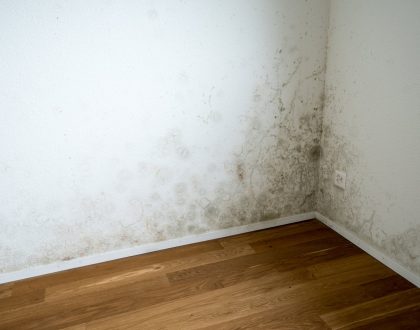Water in a Basement: Five Tips to Follow Immediately After the Damage Occurs

Water in a Basement: Five Tips to Follow Immediately After the Damage Occurs
Homeowners often fear the damage that can happen when their basement floods with water. A finished basement will have a lot of construction material and furniture that will be damaged from water. Follow these five tips to deal with the water and start addressing the damage.
Address the Problem That Is Causing Water Damage
Incoming water is not always something that you can control. For example, there is nothing you can do when heavy rainfall collects in the street, rises, reaches your window wells, and starts coming into your basement. However, you should take action to address any type of incoming water that is preventable.
Gutters can be extended to prevent water from pooling against the foundation. A foundation crack could require repair to prevent water from seeping in. A sewer needs to be cleared if tree roots are the cause of a sewage backup. A collapsed drain tile needs to be repaired so that water can travel to the sewer. These types of issues must be addressed, or else the water is going to come right back in again.
Remove the Water That Entered Your Home
Major flooding will require professional equipment to get the water out. Consider renting or purchasing a submersible water pump that will get rid of the majority of the water. You place the pump at the low point of your basement floor, attach a hose to the pump, run the hose outdoors, and let the pump do most of the work for you.
Make sure that the house is taking the water far away from the place where watered entered your home. Pumping the water next to a foundation crack or above a broken drain tile will cause the water to come back inside. Make sure that the water drains away from your home, preferably down an incline that assists in moving the water as far away as possible.
Remove the Moisture in Your Home
The water may be removed, but the moisture remains. It is important that you start circulating the air with some fans to remove any moisture that is within the space. Start by opening any doors and windows that are near the basement and place fans in front of them that will suck the air to the outside. You can even place fans around the room to simulate a cross breeze and direct air to those doors and windows.
Alternative methods to remove moisture include using a dehumidifier and turning up the heat in your home.
Remove Any Damaged Property
Understand that many things that were covered with water will not be restored. Be prepared to completely remove and toss any carpeting that was covered in water from a sewage backup, since it will be almost impossible to get the carpet fibers clean and free of moisture. Leaving the carpet in the basement will also keep the trapped moisture in the space, so make removing the carpet a priority.
Plastic items are easy to save if they got wet. The nonporous nature of plastic means that all you will need to do is wipe off the surface and make sure that it is dry. Paper items could be restored if left out to dry, but depending on how much water touched them, they may be too damaged to restore. Either way, it is best to get damaged items dry within 48 hours to prevent damage by mold.
Treat Wood for Mold and Mildew
It is possible that wood construction materials can be saved, but they will need to be treated for mold and mildew removal. This is definitely a task you will need professional help with, and a company like DRC Fire & Water Restoration can actually handle the entire restoration process for you.
Do you need expert help keeping your office clean? Contact DRC Cleaning Solutions for more information.
Recommended Posts

Flood Damage? 3 Longer Term Challenges to Prepare For
June 29, 2019

Fire Prevention Tips for Landlords and Property Owners
June 29, 2019

What Next? 6 Steps to Take After a House Fire
June 29, 2019
